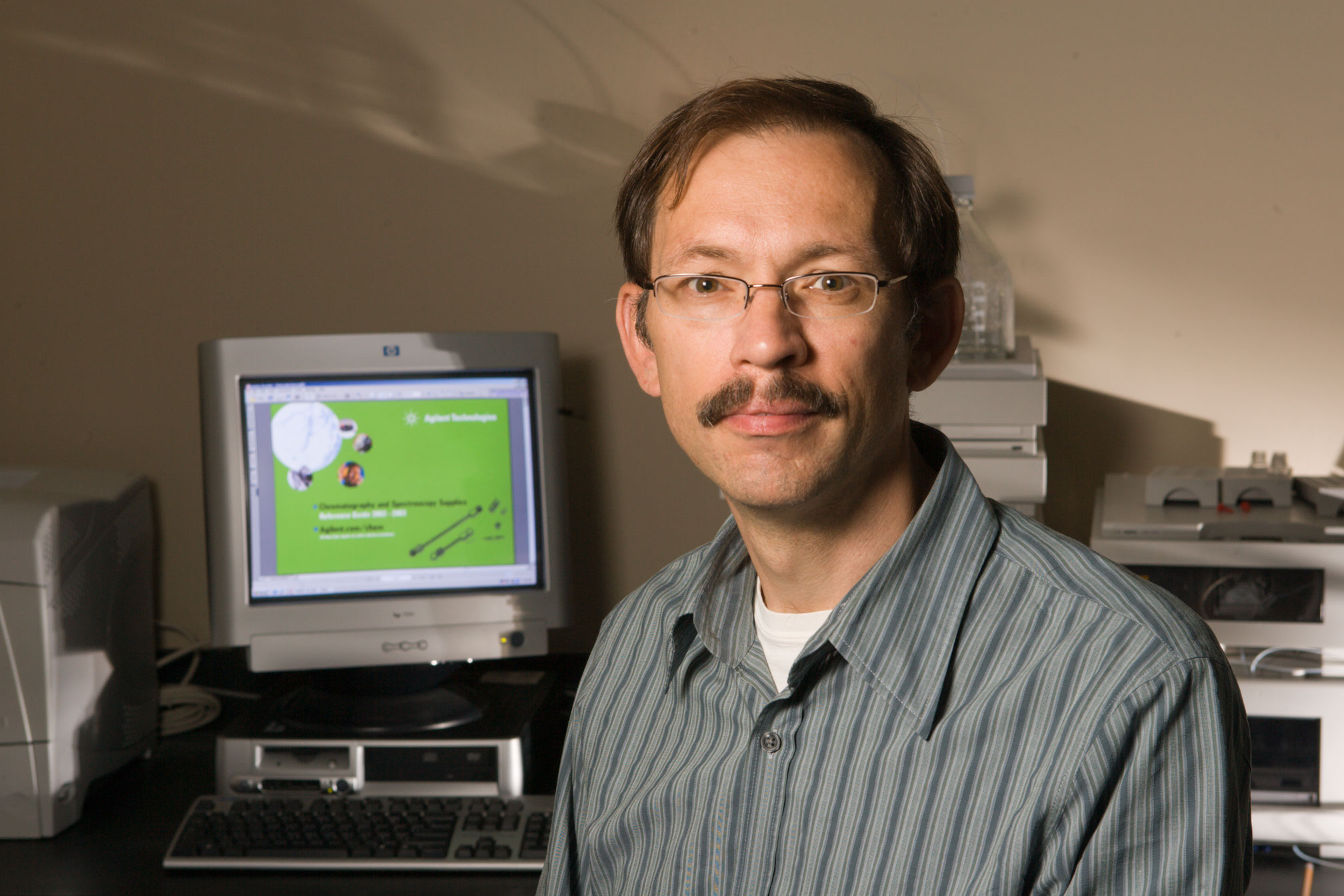Athens, Ga. – A team of investigators from the University of Georgia recently demonstrated the first method for synthesizing asymmetrical N-glycans. According to the study, published in the journal Science on July 25, the approach could lead to a better understanding of how viruses and bacteria enter cells and development of therapies to fight them.
“Eventually, if we know better which glycans are present on the cell surface of healthy and disease cells, we can develop better therapies to fight cancer, influenza and many other diseases,” said Geert-Jan Boons, UGA Distinguished Professor in Biochemical Sciences and the study’s lead author.
Glycans are complex structures that accompany every living cell and are an essential but difficult to understand class of biopolymer. All cells are decorated with glycans, which range from those that help with cell development and immune responses to the ones involved in cancer metastasis.
Glycan sequences determine biological properties of may proteins. They are sugar molecules that form simple chains or complex branching structures and are connected to nearly every protein on the surface of all living cells. Many pathogens get into cells by binding to the glycans on the cell surface-using them like a hook for cell entry and infection.
“Glycans attached to the proteins found on cell surfaces mediate numerous biological process, but determining the specific function of individual glycans has been difficult because the bulk of these sugar chains are asymmetrical, making them difficult to synthesize in the lab,” said Pamela Marino of the National Institutes of Health’s National Institute of General Medical Sciences, which partially funded the research.
“Dr. Boons has developed a methodology to overcome this hurdle. His approach allows ready synthesis of unique libraries of asymmetric glycans. These libraries will be extremely helpful in deciphering how glycans bind to specific proteins and regulate biological functions, including those that can lead to infection and disease.”
Studying the biological roles of glycans in the laboratory is further complicated because these structures are very difficult to isolate from natural sources. Symmetrical glycans, those whose branches are identical to one another, are easier to synthesize and study. However, the asymmetrical molecules, which account for as many as 85 percent of natural occurring glycans, are difficult to isolate from cells or produce in the laboratory.
Boons’ lab developed a strategy to prepare large numbers of well-defined asymmetrical N-glycans. They recognized a building block common to all N-glycans they could use to create more complex structures by chemical synthesis. Then, they obtained a set of enzymes that could extend each branch independently to give the highly complex asymmetrical structures found in nature.
“This methodology fully demonstrates the beauty of chemo-enzymatic synthesis, which paves the road for more flexibility in the synthesis of complex N-glycans,” said Zhen Wang, a postdoctoral researcher in the UGA Complex Carbohydrate Research Center who co-authored the paper.
They successfully synthesized 50 asymmetrical glycans. These structures can now be used in the chemistry and biological science community to develop a better understanding of how they work and how to fight against the diseases some of them cause.
“We have developed a powerful methodology by combining chemical and enzymatic synthesis to prepare a large number of well defined, highly complex symmetric and asymmetric glycans. The synthetic compounds make it possible to unravel the biological functions of cell surface glycans,” said Zoeisha Chinoy, a UGA chemistry student who Boons credits with performing the enzymatic modifications.
The synthesized glycans were sent to collaborators at The Scripps Research Institute for further analysis.
“Our group chemically attached linkers, a method we developed to allow the glycans to be printed and chemically coupled into glass slides, along with other compounds we had prepared that were used as controls/references,” said James Paulson, chair and professor of cell and molecular biology at the institute. “We then evaluated the ability of the glycans to be recognized by a variety of biological probes known to recognize specific sugar structures. These included plant lectins and influenza virus hemagglutinins.”
The article points out that glycan structure, particularly if it is symmetrical or not, affects how it binds to proteins found on the surface of flu viruses. The methodology could be used as a discovery tool in viral recognition.
“The distinction between bird flu and human flu is based on the recognition of glycans,” Boons said. “When bird flu turns into human flu, a viral protein changes its binding specificity from bird to human glycans.”
Structures of glycans and the way they are connected to proteins determine many physiological and pathological processes. Knowing which glycans bind to which proteins will be key information for future drug development programs, Boons said. By preparing glycans associated with one cell type at a time, his lab will be able to study processes such as fertilization and viral infection, which ultimately can lead to new types of contraception and flu treatments.
The journal article is available at http://www.sciencemag.org/content/341/6144/379.short.


